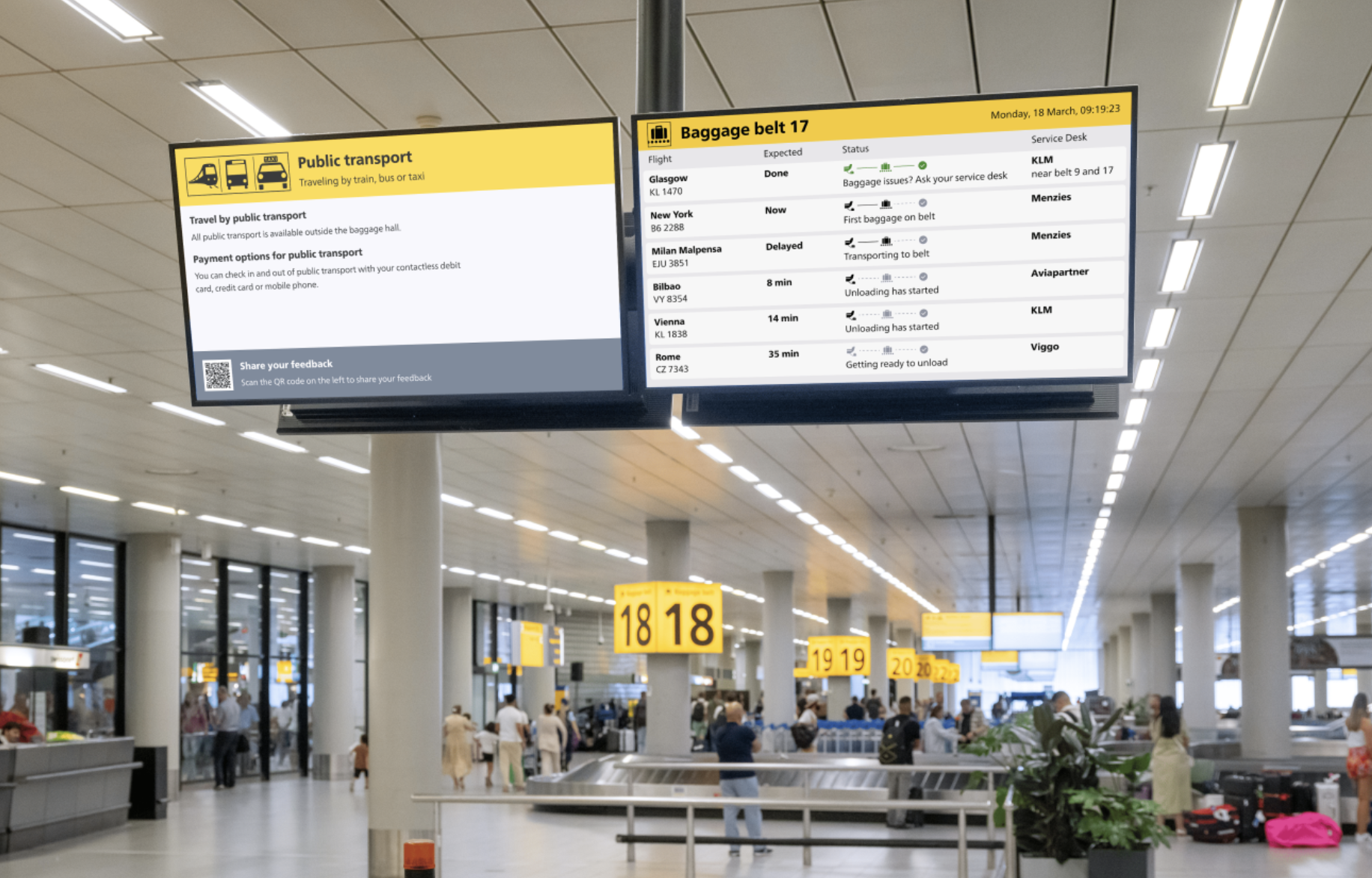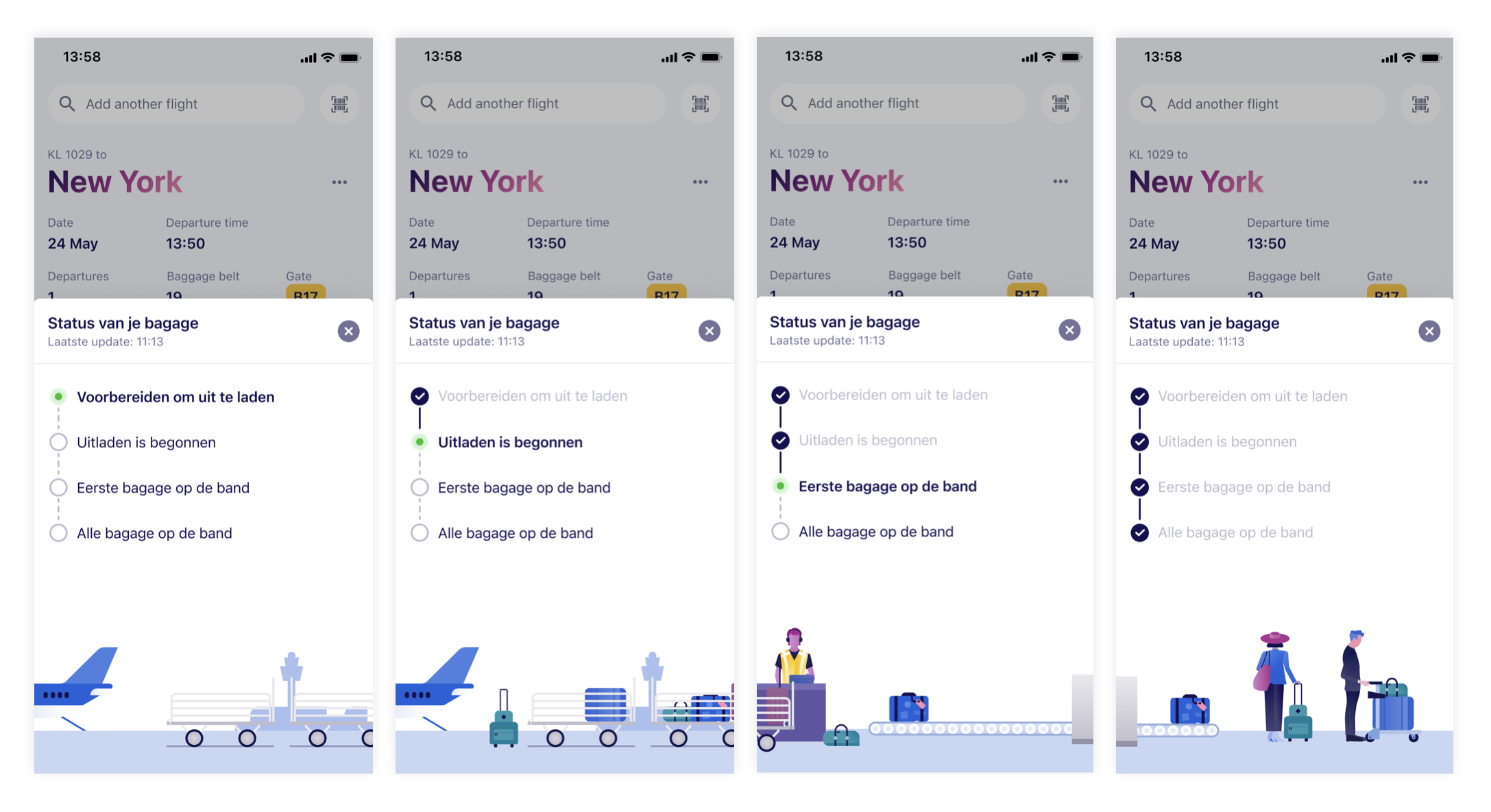Case study Schiphol Airport
Enhancing baggage reclaim experience at Schiphol Airport
Project Overview
When traveling, passengers often experience anxiety and uncertainty regarding the whereabouts and status of their checked luggage. Recognizing this pain point, Schiphol Airport aimed to enhance the passenger experience by providing real-time, transparent information about baggage status using AI-driven technology. My role as a UX Copywriter was to craft microcopy across multiple touchpoints—digital screens in baggage halls, a mobile app, and the airport’s website—to keep passengers informed and reassured about their baggage.
Objective
The primary objective was to improve passenger satisfaction by making the wait for baggage less stressful and more predictable. By providing real-time updates about baggage status, passengers could feel more in control and less anxious, enhancing their overall airport experience.
Challenge
The challenge lay in presenting real-time data in a way that was clear, reassuring, and easy for all passengers to understand, regardless of their familiarity with the airport or the language they speak. The microcopy needed to be concise yet informative, capable of conveying complex information succinctly and effectively.
Research and Understanding
Before crafting the copy, I delved into understanding the passenger's journey, particularly at the baggage claim area. This involved analyzing passenger flow, common questions, and points of confusion as observed directly and reported by airport staff.
Collaboration
Worked closely with UX designers, data scientists, and airport operations to understand the nuances of the data provided by the self-learning model and the various stages of baggage handling. This collaboration ensured that the microcopy was accurate and aligned with real-time data feeds.
Writing Microcopy
Developed microcopy for each stage of the baggage process:
"Getting Ready to Unload": The aircraft has landed, and preparations are being made to begin unloading baggage.
"Unloading Has Started": Your baggage is being unloaded from the aircraft.
"Baggage Is on Its Way": Your baggage is being transported to the baggage claim area.
"First Baggage on Belt": The first pieces of baggage are now arriving on the belt.
"All Baggage on Belt": All baggage is now available on the belt.
"Baggage Issues? Ask Your Service Desk": For any issues with baggage, please consult the service desk for assistance.
Each status was crafted to not only inform but also to mitigate frustration and anxiety, especially in case of delays.
Iterative Testing and Feedback
Conducted A/B testing with different versions of microcopy to see which terms and styles were most effective in communicating with passengers. Feedback was gathered through surveys and direct observation in the baggage claim area.
Implementation
Integrated the final microcopy into the digital displays, app, and website, ensuring consistency across all channels.
Results
Post-implementation, passenger surveys indicated a significant increase in satisfaction regarding the baggage claim process at Schiphol. The clear, empathetic, and informative microcopy helped reduce anxiety and confusion, providing passengers with a sense of control over their travel experience. The airport also reported fewer inquiries to staff regarding baggage status, indicating that the information provided was effective and comprehensive.
Reflection
This project underscored the importance of UX copy in enhancing user experience and managing customer expectations in real-time operational settings. By providing passengers with clear, timely, and reassuring information, we were able to transform a typically stressful part of the journey into a more pleasant experience. This case study highlights the critical role of UX copywriting in improving service transparency and enhancing customer satisfaction in a high-stress environment like an airport.



